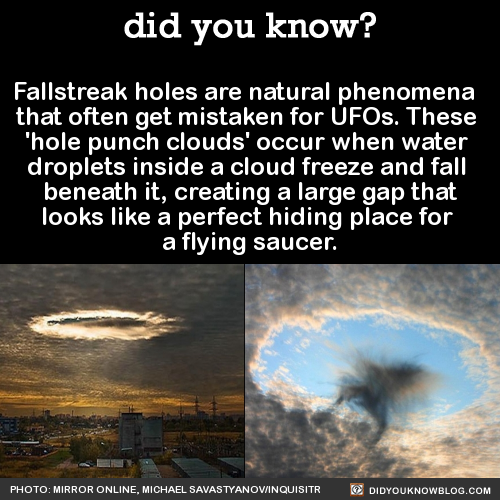Curves Of Constant Width
Curves of constant width

Source
The width of a circle is constant: its diameter.
But the circle is not the only shape that holds this pristine title. For instance let’s look at the Reuleaux triangle
Reuleaux triangle
A Reuleaux triangle is a shape formed from the intersection of three circular disks, each having its center on the boundary of the other two.

The Reuleaux triangle is the first of a sequence of Reuleaux polygons, curves of constant width formed from regular polygons with an odd number of sides.
Some of these curves have been used as the shapes of coins

To drill square holes.

They are not entirely square, their edges are fillets i.e the edges are rounded and not sharp.
This animation offers a good insight as to why that is so.

And in china, apparently on bicycles.
The man Guan Baihua shows his self-made multi-angle-wheel bicycle on May 6, 2009 in Qingdao of Shandong Province, China. Guan Baihua spent 18 months to complete this strange bicycle.

Other shapes of constant width
There are other shapes of constant width beside the Reuleaux triangle ( that has been discussed in this post ), a whole bunch of them really. Do take a look at them. ( links below )
I will leave you guys with my favorite one.

More:
If this post fascinated you, i strongly suggest you check these out. They go in-depth with the mathematics that underlies these curves and talk about other cool stuff:
An animation of non-circular rollers
Shapes and Solids of Constant Width - Numberphile
Shapes of constant width
Reuleaux Polygons,
Edit:
For those who are wondering if these are something that one would stumble upon on a regular basis. You may not find perfect ones but similiar ones definitely.
I found mine on a really old BMI calculator thingy. ( not sure what you would call it )

Have fun exploring !
More Posts from T-sci-eng and Others




Elevated Bus That Drives Above Traffic Jams

This Week in Chemistry: The world’s first nanocar race, and making a painkiller last longer using a metal-organic framework: https://goo.gl/TaS7HG
Solar System: Things to Know This Week
Reaching out into space yields benefits on Earth. Many of these have practical applications — but there’s something more than that. Call it inspiration, perhaps, what photographer Ansel Adams referred to as nature’s “endless prospect of magic and wonder.“
Our ongoing exploration of the solar system has yielded more than a few magical images. Why not keep some of them close by to inspire your own explorations? This week, we offer 10 planetary photos suitable for wallpapers on your desktop or phone. Find many more in our galleries. These images were the result of audacious expeditions into deep space; as author Edward Abbey said, "May your trails be crooked, winding, lonesome, dangerous, leading to the most amazing view.”

1. Martian Selfie
This self-portrait of NASA’s Curiosity Mars rover shows the robotic geologist in the “Murray Buttes” area on lower Mount Sharp. Key features on the skyline of this panorama are the dark mesa called “M12” to the left of the rover’s mast and pale, upper Mount Sharp to the right of the mast. The top of M12 stands about 23 feet (7 meters) above the base of the sloping piles of rocks just behind Curiosity. The scene combines approximately 60 images taken by the Mars Hand Lens Imager, or MAHLI, camera at the end of the rover’s robotic arm. Most of the component images were taken on September 17, 2016.
800 x 600
1024 x 768
1280 x 1024
1600 x 1200
1280 x 800
1440 x 900
1920 x 1200

2. The Colors of Pluto
NASA’s New Horizons spacecraft captured this high-resolution, enhanced color view of Pluto on July 14, 2015. The image combines blue, red and infrared images taken by the Ralph/Multispectral Visual Imaging Camera (MVIC). Pluto’s surface sports a remarkable range of subtle colors, enhanced in this view to a rainbow of pale blues, yellows, oranges, and deep reds. Many landforms have their own distinct colors, telling a complex geological and climatological story that scientists have only just begun to decode.
800 x 600
1024 x 768
1280 x 1024
1600 x 1200
1280 x 800
1440 x 900
1920 x 1200

3. The Day the Earth Smiled
On July 19, 2013, in an event celebrated the world over, our Cassini spacecraft slipped into Saturn’s shadow and turned to image the planet, seven of its moons, its inner rings — and, in the background, our home planet, Earth. This mosaic is special as it marks the third time our home planet was imaged from the outer solar system; the second time it was imaged by Cassini from Saturn’s orbit, the first time ever that inhabitants of Earth were made aware in advance that their photo would be taken from such a great distance.
800 x 600
1024 x 768
1280 x 1024
1600 x 1200
1280 x 800
1440 x 900
1920 x 1200

4. Looking Back
Before leaving the Pluto system forever, New Horizons turned back to see Pluto backlit by the sun. The small world’s haze layer shows its blue color in this picture. The high-altitude haze is thought to be similar in nature to that seen at Saturn’s moon Titan. The source of both hazes likely involves sunlight-initiated chemical reactions of nitrogen and methane, leading to relatively small, soot-like particles called tholins. This image was generated by combining information from blue, red and near-infrared images to closely replicate the color a human eye would perceive.
800 x 600
1024 x 768
1280 x 1024
1600 x 1200
1280 x 800
1440 x 900
1920 x 1200

5. Catching Its Own Tail
A huge storm churning through the atmosphere in Saturn’s northern hemisphere overtakes itself as it encircles the planet in this true-color view from Cassini. This picture, captured on February 25, 2011, was taken about 12 weeks after the storm began, and the clouds by this time had formed a tail that wrapped around the planet. The storm is a prodigious source of radio noise, which comes from lightning deep within the planet’s atmosphere.
800 x 600
1024 x 768
1280 x 1024
1600 x 1200
1280 x 800
1440 x 900
1920 x 1200

6. The Great Red Spot
Another massive storm, this time on Jupiter, as seen in this dramatic close-up by Voyager 1 in 1979. The Great Red Spot is much larger than the entire Earth.
800 x 600
1024 x 768
1280 x 1024
1600 x 1200
1280 x 800
1440 x 900
1920 x 1200

7. More Stormy Weather
Jupiter is still just as stormy today, as seen in this recent view from NASA’s Juno spacecraft, when it soared directly over Jupiter’s south pole on February 2, 2017, from an altitude of about 62,800 miles (101,000 kilometers) above the cloud tops. From this unique vantage point we see the terminator (where day meets night) cutting across the Jovian south polar region’s restless, marbled atmosphere with the south pole itself approximately in the center of that border. This image was processed by citizen scientist John Landino. This enhanced color version highlights the bright high clouds and numerous meandering oval storms.
800 x 600
1024 x 768
1280 x 1024
1600 x 1200
1280 x 800
1440 x 900
1920 x 1200

8. X-Ray Vision
X-rays stream off the sun in this image showing observations from by our Nuclear Spectroscopic Telescope Array, or NuSTAR, overlaid on a picture taken by our Solar Dynamics Observatory (SDO). The NuSTAR data, seen in green and blue, reveal solar high-energy emission. The high-energy X-rays come from gas heated to above 3 million degrees. The red channel represents ultraviolet light captured by SDO, and shows the presence of lower-temperature material in the solar atmosphere at 1 million degrees.
800 x 600
1024 x 768
1280 x 1024
1600 x 1200
1280 x 800
1440 x 900
1920 x 1200

9. One Space Robot Photographs Another
This image from NASA’s Mars Reconnaissance Orbiter shows Victoria crater, near the equator of Mars. The crater is approximately half a mile (800 meters) in diameter. It has a distinctive scalloped shape to its rim, caused by erosion and downhill movement of crater wall material. Since January 2004, the Mars Exploration Rover Opportunity has been operating in the region where Victoria crater is found. Five days before this image was taken in October 2006, Opportunity arrived at the rim of the crater after a drive of more than over 5 miles (9 kilometers). The rover can be seen in this image, as a dot at roughly the “ten o'clock” position along the rim of the crater. (You can zoom in on the full-resolution version here.)
800 x 600
1024 x 768
1280 x 1024
1600 x 1200
1280 x 800
1440 x 900
1920 x 1200

10. Night Lights
Last, but far from least, is this remarkable new view of our home planet. Last week, we released new global maps of Earth at night, providing the clearest yet composite view of the patterns of human settlement across our planet. This composite image, one of three new full-hemisphere views, provides a view of the Americas at night from the NASA-NOAA Suomi-NPP satellite. The clouds and sun glint — added here for aesthetic effect — are derived from MODIS instrument land surface and cloud cover products.
Full Earth at night map
Americas at night
Discover more lists of 10 things to know about our solar system HERE.
Make sure to follow us on Tumblr for your regular dose of space: http://nasa.tumblr.com

1. Lungs don’t just facilitate respiration - they also make blood. Mammalian lungs produce more than 10 million platelets (tiny blood cells) per hour, which equates to the majority of platelets circulating the body.
2. It is mathematically possible to build an actual time machine - what’s holding us back is finding materials that can physically bend the fabric of space-time.
3. Siberia has a colossal crater called the ‘doorway to the underworld’, and its permafrost is melting so fast, ancient forests are being exposed for the first time in 200,000 years.
4. The world’s first semi-synthetic organisms are living among us - scientists have given rise to new lifeforms using an expanded, six-letter genetic code.
5. Vantablack - the blackest material known to science - now comes in a handy ‘spray-on’ form and it’s the weirdest thing we’ve seen so far this year.
6. It’s official: time crystals are a new state of matter, and we now have an actual blueprint to create these “impossible” objects at will.
7. A brand new human organ has been classified, and it’s been hiding in plain sight this whole time. Everyone, meet your mesentery.
8. Carl Sagan was freakishly good at predicting the future - his disturbingly accurate description of a world where pseudoscience and scientific illiteracy reigns gave us all moment for pause.
9. A single giant neuron that wraps around the entire circumference of a mouse’s brain has been identified, and it appears to be linked to mammalian consciousness.
10. The world’s rarest and most ancient dog isn’t extinct after all - in fact, the outrageously handsome New Guinea highland wild dog appears to be thriving.
11. Your appendix might not be the useless evolutionary byproduct after all. Unlike your wisdom teeth, your appendix might actually be serving an important biological function - and one that our species isn’t ready to give up just yet.
12. After 130 years, we might have to completely redraw the dinosaur family tree, thanks to a previously unimportant cat-sized fossil from Scotland.
13. Polycystic ovary syndrome might actually start in the brain, not the ovaries.
14. Earth appears to have a whole new continent called Zealandia, which would wreak havoc on all those textbooks and atlases we’ve got lying around.
15. Humans have had a bigger impact on Earth’s geology than the infamous Great Oxidation Event 2.3 billion years ago, and now scientists are calling for a new geological epoch - the Anthropocene - to be officially recognised.
16. Turns out, narwhals - the precious unicorns of the sea - use their horns for hunting. But not how you’d think.
17. Human activity has literally changed the space surrounding our planet - decades of Very Low Frequency (VLF) radio communications have accidentally formed a protective, human-made bubble around Earth.
18. Farmers routinely feed red Skittles to their cattle, because it’s a cheap alternative to corn. ¯\_(ツ)_/¯
Major types of Engines
Straight In-line
This is the type of engine that you find in your quotidian car. Nothing fancy, just all pistons arranged parallel along the vertical direction.

V in-line
Now, this is the sort of the engine that you find on sports cars like the Ferrari. When you hear sports enthusiasts go ‘ Whoa, that’s a V-12! ‘ - it just means that the engine has a V-type arrangement with 12 cylinders.

V + Inline = V-inline
Commonly referred to as the VR engine.
The name VR6 comes from a combination of V engine (German: V-Motor), and the German word “Reihenmotor” (meaning “inline engine” or “straight engine”)

Volkswagen’s VR6 engines, and the later VR5 variants, are a family of internal combustion engines, characterized by a narrow-angle (10.5° or 15°) V engine configuration.

a: straight engine, b: V engine, c: VR engine
W engine
A W engine is a type of reciprocating engine ( again created by Volkswagen) arranged with its cylinders in a configuration in which the cylinder banks resemble the letter W, in the same way those of a V engine resemble the letter V.

Bugatti Veyron’s W16 engine
A W16 engine is used on the Bugatti Veyron. That’s 16 cylinders!
Flat Engine
Flat engines offer several advantages for motorcycles, namely: a low centre of gravity, smoothness, suitability for shaft drive, and (if air-cooled) excellent cooling of the cylinders. You can find them on aircrafts as well

Radial Engine (aka the dancing starfish)
They were used mostly in small aircraft for the propeller
The big advantage of radials was their large frontal area, which meant they could be air cooled, meaning less maintenance, failures, and of course a lower cost of initial purchase and maintenance.

Wankel Engine
This engine has only 3 moving parts and can make a lot of power.However, they are pretty inefficient, the last car to use this was a Mazda RX-8.

Axial Engine

The axial engine is a very interesting design. But they are not widely used because they are just hard to make and running these things at high RPM’s is a challenge.
Duke engines are equipped with this type.
Jet engine
Commonly jet engines refer to the engines that are found on, well Jets!
Suck,squeeze,bang and blow
Air is sucked in through the front and squeezed. A controlled explosion follows and the exhaust is blown out through the back

But, Jet engines also include the engines that are found on rockets, hybrids and water-jets. And their mode of operation is different than the one mentioned above.
Pretty cool eh?
Have a great day!
PC: Howstuffworks, Duke, MichaelFrey, Azure.km
** There is also the Stirling Engine. It’s amazing and a topic for an another post. But if you are interested do check out more about it here.
EDIT : Had forgotten about the VR and the W-engines. My bad! Thanks for pointing it out.:D.
EDIT2: The suck squeeze bang and blow illustration was incorrect. Ergo, changed that.

This is the Hollow Mask Illusion.
At first, it looks like the face is popping out towards you, but as it turns far enough, you realise that it is in fact concave, bending inwards from the base, away from you. This illusion plays on the fact that our perception is influenced by past experience; we expect faces to protrude outwards, which helps the illusion trick our brains.
You can make your own version of this mask at home, and it’s an awesome activity to try with your kids to get them thinking about the science of psychology. Click here for all the info!

Fallstreak holes are natural phenomena that often get mistaken for UFOs. These ‘hole punch clouds’ occur when water droplets inside a cloud freeze and fall beneath it, creating a large gap that looks like a perfect hiding place for a flying saucer.



Aliens, obvi.

The rarity of fallstreak holes is what tends to throw people.

That paired with the tendency to look at anything in the sky and cry ‘UFO!’ is the perfect makings of a false alien alarm.

Sometimes these clouds have little rainbows inside.


They aren’t always circular, though…

They make all kinds of crazy shapes.

Including airplane/sword/cross/wieners.

Photos via: Rantplaces
Source






Okay, I’ve really missed talking about teratology.
These dogs have polydactyl, but what’s interesting is that the extra dew claws can move independently of one another and grip things. They’re only found on the hind feet giving the dogs a distinctly velociraptor look
The Beauceron is an ancient breed, and no one has a definitive answer of why they have these, but the prevailing theory is that they were bred to do a lot of rock climbing because they were used for herding and hunting over rocky mountainous terrain.
Other places to see my posts: INSTAGRAM / FACEBOOK / ETSY / KICKSTARTER
10 “Spinoffs of Tomorrow” You Can License for Your Business
The job of the our Technology Transfer Program is pretty straight-forward – bring NASA technology down to Earth. But, what does that actually mean? We’re glad you asked! We transfer the cool inventions NASA scientists develop for missions and license them to American businesses and entrepreneurs. And that is where the magic happens: those business-savvy licensees then create goods and products using our NASA tech. Once it hits the market, it becomes a “NASA Spinoff.”
If you’re imagining that sounds like a nightmare of paperwork and bureaucracy, think again. Our new automated “ATLAS” system helps you license your tech in no time — online and without any confusing forms or jargon.
So, sit back and browse this list of NASA tech ripe for the picking (well, licensing.) When you find something you like, follow the links below to apply for a license today! You can also browse the rest of our patent portfolio - full of hundreds of available technologies – by visiting technology.nasa.gov.

1. Soil Remediation with Plant-Fungal Combinations
Ahh, fungus. It’s fun to say and fun to eat—if you are a mushroom fan. But, did you know it can play a crucial role in helping trees grow in contaminated soil? Scientists at our Ames Research Center discovered that a special type of the fungus among us called “Ectomycorrhizal” (or EM for short) can help enhance the growth of trees in areas that have been damaged, such as those from oil spills.

2. Preliminary Research Aerodynamic Design to Lower Drag
When it comes to aircraft, drag can be, well…a drag. Luckily, innovators at our Armstrong Flight Research Center are experimenting with a new wing design that removes adverse yaw (or unwanted twisting) and dramatically increases aircraft efficiency by reducing drag. Known as the “Preliminary Research Aerodynamic Design to Lower Drag (PRANDTL-D)” wing, this design addresses integrated bending moments and lift to achieve drag reduction.

3. Advancements in Nanomaterials
What do aircraft, batteries, and furniture have in common? They can ALL be improved with our nanomaterials. Nanomaterials are very tiny materials that often have unique optical, electrical and mechanical properties. Innovators at NASA’s Glenn Research Center have developed a suite of materials and methods to optimize the performance of nanomaterials by making them tougher and easier to process. This useful stuff can also help electronics, fuel cells and textiles.

4. Green Precision Cleaning
Industrial cleaning is hard work. It can also be expensive when you have to bring in chemicals to get things squeaky. Enter “Green Precision Cleaning,” which uses the nitrogen bubbles in water instead. The bubbles act as a scrubbing agent to clean equipment. Goddard Space Flight Center scientists developed this system for cleaning tubing and piping that significantly reduces cost and carbon consumption. Deionized water (or water that has been treated to remove most of its mineral ions) takes the place of costlier isopropyl alcohol (IPA) and also leaves no waste, which cuts out the pricey process of disposal. The cleaning system quickly and precisely removes all foreign matter from tubing and piping.

5. Self-Contained Device to Isolate Biological Samples
When it comes to working in space, smaller is always better. Innovators at our Johnson Space Center have developed a self-contained device for isolating microscopic materials like DNA, RNA, proteins, and cells without using pipettes or centrifuges. Think of this technology like a small briefcase full of what you need to isolate genetic material from organisms and microorganisms for analysis away from the lab. The device is also leak-proof, so users are protected from chemical hazards—which is good news for astronauts and Earth-bound scientists alike.

6. Portable, Rapid, Quiet Drill
When it comes to “bringing the boom,” NASA does it better than anyone. But sometimes, we know it’s better to keep the decibels low. That’s why innovators at NASA’s Jet Propulsion Laboratory have developed a new handheld drilling device, suitable for a variety of operations, that is portable, rapid and quiet. Noise from drilling operations often becomes problematic because of the location or time of operations. Nighttime drilling can be particularly bothersome and the use of hearing protection in the high-noise areas may be difficult in some instances due to space restrictions or local hazards. This drill also weighs less than five pounds – talk about portable power.

7. Damage Detection System for Flat Surfaces
The ability to detect damage to surfaces can be crucial, especially on a sealed environment that sustains human life or critical equipment. Enter Kennedy Space Center’s damage detection system for flat composite surfaces. The system is made up of layered composite material, with some of those layers containing the detection system imbedded right in. Besides one day potentially keeping humans safe on Mars, this tech can also be used on aircrafts, military shelters, inflatable structures and more.

8. Sucrose-Treated Carbon Nanotube and Graphene Yarns and Sheets
We all know what a spoonful of sugar is capable of. But, who knew it could help make some materials stronger? Innovators at NASA’s Langley Research Center did! They use dehydrated sucrose to create yarns and woven sheets of carbon nanotubes and graphene.
The resulting materials are lightweight and strong. Sucrose is inexpensive and readily available, making the process cost-effective. Makes you look at the sweet substance a little differently, doesn’t it?

9. Ultrasonic Stir Welding
NASA scientists needed to find a way to friction weld that would be gentler on their welding equipment. Meet our next tech, ultrasonic stir welding.
NASA’s Marshall Space Flight Center engineers developed ultrasonic stir welding to join large pieces of very high-strength, high-melting-temperature metals such as titanium and Inconel. The addition of ultrasonic energy reduces damaging forces to the stir rod (or the piece of the unit that vibrates so fast, it joins the welding material together), extending its life. The technology also leaves behind a smoother, higher-quality weld.

10. A Field Deployable PiezoElectric Gravimeter (PEG)
It’s important to know that the fuel pumping into rockets has remained fully liquid or if a harmful chemical is leaking out of its container. But each of those things, and the many other places sensors are routinely used, tends to require a specially designed, one-use device.
That can result in time-consuming and costly cycles of design, test and build, since there is no real standardized sensor that can be adapted and used more widely.
To meet this need, the PiezoElectric Gravimeter (PEG) was developed to provide a sensing system and method that can serve as the foundation for a wide variety of sensing applications.

See anything your business could use? Did anything inspire you to start your own company? If so, head to our website at technology.nasa.gov to check them out.
When you’ve found what you need, click, “Apply Now!” Our licensing system, ATLAS, will guide you through the rest.
If the items on this round-up didn’t grab you, that’s ok, too. We have hundreds of other technologies available and ready to license on our website.
And if you want to learn more about the technologies already being used all around you, visit spinoff.nasa.gov.
Make sure to follow us on Tumblr for your regular dose of space: http://nasa.tumblr.com

Does one of these LEGO men look bigger than the other? They’re actually the exact same size, but are in an Ames room - a false-perspective illusion room that tricks your brain into thinking things are smaller, or larger, than they really are.
You can make one of these models to try this for yourself. Download our free template from here. And it even works in full size, if you can make one large enough!

-
 happytohavebeenfound reblogged this · 1 year ago
happytohavebeenfound reblogged this · 1 year ago -
 happytohavebeenfound liked this · 1 year ago
happytohavebeenfound liked this · 1 year ago -
 go-wind-stuff reblogged this · 5 years ago
go-wind-stuff reblogged this · 5 years ago -
 theinquisitivereceptacle reblogged this · 6 years ago
theinquisitivereceptacle reblogged this · 6 years ago -
 totalitariandemocracy liked this · 6 years ago
totalitariandemocracy liked this · 6 years ago -
 chriscandothat liked this · 6 years ago
chriscandothat liked this · 6 years ago -
 awkwardrosestuff liked this · 6 years ago
awkwardrosestuff liked this · 6 years ago -
 solarpunkbaby liked this · 7 years ago
solarpunkbaby liked this · 7 years ago -
 thamoobilla liked this · 7 years ago
thamoobilla liked this · 7 years ago -
 angstroooms liked this · 7 years ago
angstroooms liked this · 7 years ago -
 sgtbot-blog liked this · 7 years ago
sgtbot-blog liked this · 7 years ago -
 t-sci-eng reblogged this · 7 years ago
t-sci-eng reblogged this · 7 years ago -
 roastbeets liked this · 8 years ago
roastbeets liked this · 8 years ago -
 thenightetc liked this · 8 years ago
thenightetc liked this · 8 years ago -
 jwchapman13 liked this · 8 years ago
jwchapman13 liked this · 8 years ago -
 mtulow reblogged this · 8 years ago
mtulow reblogged this · 8 years ago -
 mtulow liked this · 8 years ago
mtulow liked this · 8 years ago -
 butterflies-that-fly liked this · 8 years ago
butterflies-that-fly liked this · 8 years ago -
 mbolding reblogged this · 8 years ago
mbolding reblogged this · 8 years ago -
 absolute-ridiculosity liked this · 8 years ago
absolute-ridiculosity liked this · 8 years ago -
 gladyvir liked this · 8 years ago
gladyvir liked this · 8 years ago -
 pineconeman liked this · 8 years ago
pineconeman liked this · 8 years ago -
 ursekpursek liked this · 8 years ago
ursekpursek liked this · 8 years ago -
 tumbleweed-chaser liked this · 8 years ago
tumbleweed-chaser liked this · 8 years ago -
 mediocrelittleshits liked this · 8 years ago
mediocrelittleshits liked this · 8 years ago -
 theweezbeez reblogged this · 8 years ago
theweezbeez reblogged this · 8 years ago -
 theweezbeez liked this · 8 years ago
theweezbeez liked this · 8 years ago -
 vladnicu liked this · 8 years ago
vladnicu liked this · 8 years ago -
 corruptionmath liked this · 8 years ago
corruptionmath liked this · 8 years ago -
 whatswrongwiththepolarity liked this · 8 years ago
whatswrongwiththepolarity liked this · 8 years ago -
 astroneurotic liked this · 8 years ago
astroneurotic liked this · 8 years ago -
 blue-eyes-and-dragonflies-blog liked this · 8 years ago
blue-eyes-and-dragonflies-blog liked this · 8 years ago -
 benjamminseal-blog reblogged this · 8 years ago
benjamminseal-blog reblogged this · 8 years ago -
 benjamminseal-blog liked this · 8 years ago
benjamminseal-blog liked this · 8 years ago -
 aromantic-spectrum reblogged this · 8 years ago
aromantic-spectrum reblogged this · 8 years ago -
 emilynicole54 reblogged this · 8 years ago
emilynicole54 reblogged this · 8 years ago -
 emilynicole54 liked this · 8 years ago
emilynicole54 liked this · 8 years ago -
 itsjohnegman liked this · 8 years ago
itsjohnegman liked this · 8 years ago -
 nemorialex liked this · 8 years ago
nemorialex liked this · 8 years ago -
 perithetriangle liked this · 8 years ago
perithetriangle liked this · 8 years ago -
 brotherhoodotravellingpersonal reblogged this · 8 years ago
brotherhoodotravellingpersonal reblogged this · 8 years ago -
 convertedgeneticist liked this · 8 years ago
convertedgeneticist liked this · 8 years ago